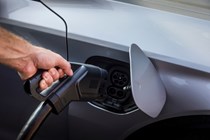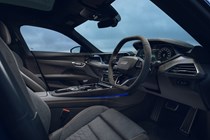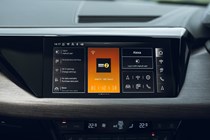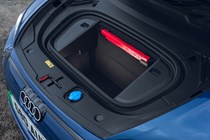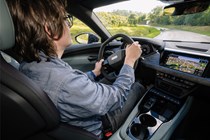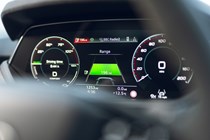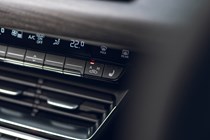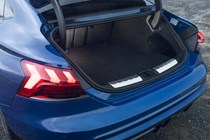Audi E-Tron GT engines, drive and performance
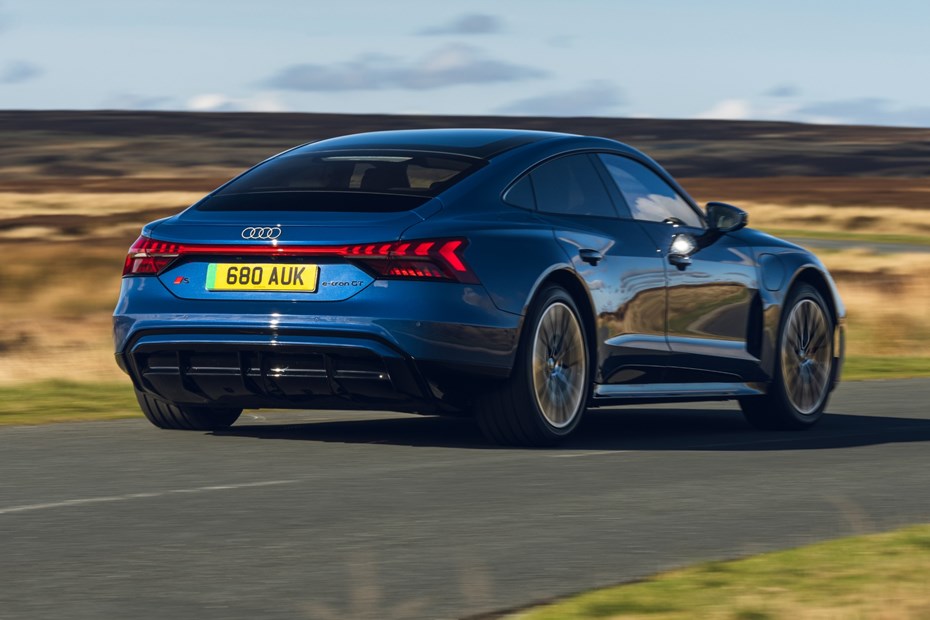
- Facelift models have (much) more power
- Basic Quattro no longer available
- With up to 925hp this is a very, very fast car
Electric motors
There were originally two versions of the E-Tron GT – the standard Quattro and the faster RS E-Tron GT. From the 2024 facelift, however, there is now an S, an RS and an RS Performance, with no basic Quattro model at all, and even the S has more power than the outgoing range-topping RS model.
All use the same configuration of front and rear electric motors, and four driven wheels. However, there are some detail differences between how the motors interact with the wheels. Every one of the latest models have torque vectoring, for instance – which is the ability to shuffle torque (pulling power) from one side of the car to the other to improve traction or make the handling more exciting – but the RS versions also have a mechanical limited slip differential at the back for even greater control.
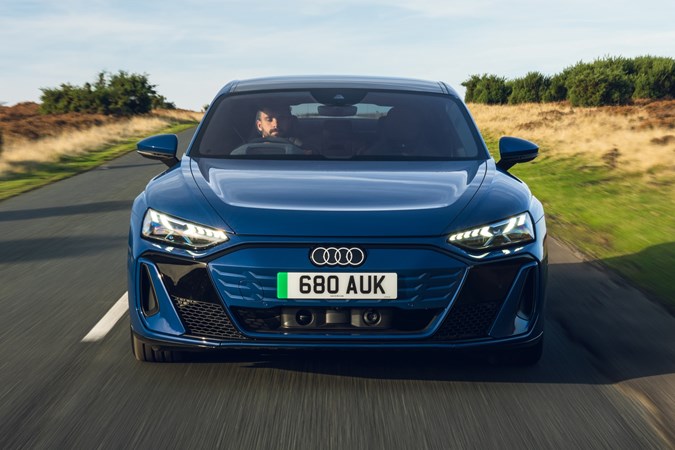
Performance is nothing less than sensational, with the S capable of 0-62mph in 3.4 seconds and an electronically limited top speed of 152mph. The RS can do 0-62mph in 2.8 seconds, while the RS Performance drops this further to 2.5 seconds – both have a top speed limited to 155mph.
We can vouch for how easily the maximum speed is reached thanks to time spent on unrestricted German autobahns – and it really is very easily – and can also tell you a launch-control start in the RS Performance is a faintly terrifying mixture of immense composure and deep discomfort, as your internal organs are left scattered somewhere on the road behind you. Even in the wet, the electronically controlled traction is so great the RS Performance will do 0-62mph in under 3 seconds.
The launch control is relevant, however, as this is the only time the E-Tron GT unleashes every bit of its available firepower. All models use less in daily driving, with the RS variants now featuring a Boost button on the steering wheel that enables an extra 95hp for 10 seconds to help with overtaking and similar activities.
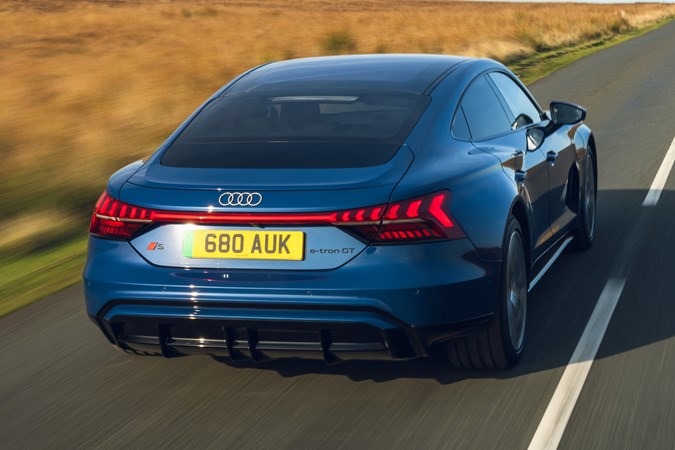
This means that although the S E-Tron GT has a headline figure of 680hp, you only get that when using launch control. The rest of the time you have to make do with 591hp, which limits 0-62mph to 3.6 seconds. The RS E-Tron GT has 856hp in launch control, 680hp in ‘normal’ driving and up to 775hp in Boost; 0-62mph takes 3.1 seconds without launch control.
The RS E-Tron Performance has a staggering 925hp in launch control, 748hp in normal driving and 843hp on Boost. Without launch control, 0-62mph takes 2.9 seconds. It’s almost hard to believe how quickly electrification has created such powerful machinery – those are supercar-beating figures in a four-door saloon. What’s more, you can get a Porsche Taycan with even more oomph, should you feel you really need it. You can also get lesser Taycans including a rear-drive model that’ll officially do over 400 miles.
If you’re wondering about the original E-Tron GT line-up, the pre-facelift RS 0-62mph time is 3.3 seconds compared with 4.1 seconds for the Quattro, falling slightly with their more limited overboost function enabled. That increases power from 476 to 530hp (Quattro) and 530 to 646hp (RS) but only for 2.5 seconds at a time.
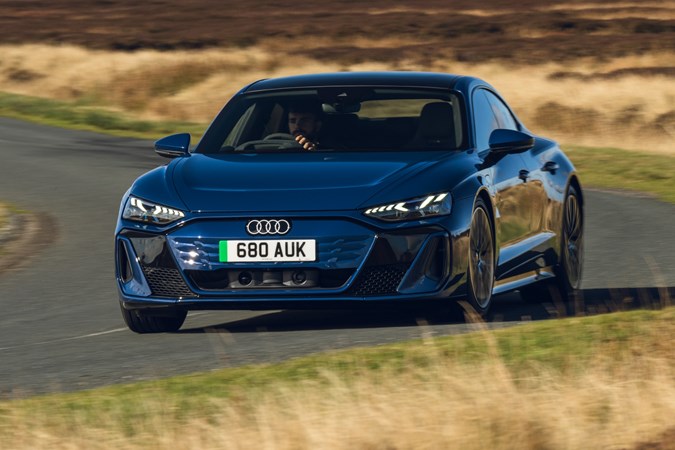
What’s it like to drive?
- This is a big, heavy car, yet impressively agile
- Latest air-suspension is sensational for comfort and control
- Different character to the related Porsche Taycan
The original E-Tron GT models fell somewhere between performance car and luxury without quite mastering either. The facelift version benefits from an updated air suspension system that makes for a much more convincing all-rounder, able to dispatch complex corner sequences with immense speed and poise while also being more comfortable and luxurious over long distances.
The upgrades are similar to those of the 2024-onwards Porsche Taycan, but the E-Tron GT retains an individual character that in some ways suits the capabilities of the new suspension better. If you’re after an undemanding yet very high-speed electric grand tourer, this Audi is now worth an even closer look.
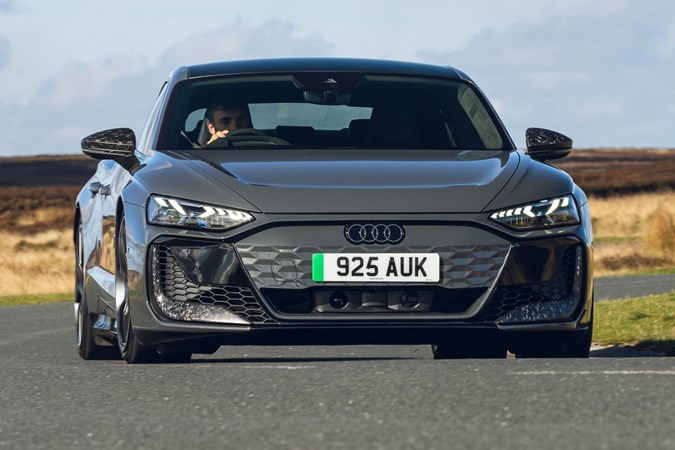
First things first, you might be expecting a 925hp vehicle to be something of handful. And yet, the E-Tron RS Performance now has such breadth of talent that if you can afford it we’d not hesitate to suggest this is the version to go for. It is ridiculously fast when needed, but a pussycat around town and basically as comfortable as the rest of the line-up on the motorway while offering the greatest possible cornering composure.
That said, the 680hp S E-Tron is probably more than fast enough for most purposes, even if it did sometimes feel a little too soft in the turns when compared directly to the RS – showing this car’s 2.3-tonne weight more noticeably – although in isolation an S on standard suspension is still mind-bogglingly capable.
The S is expected to be the most popular for UK buyers, with the RS models evenly split for the remainder of sales. Regardless, go for Vorsprung trim if you can to get the active suspension with extra tricks.

In the Comfort driving mode, this includes the ability to lean into turns and flatten the pitching during hard acceleration and braking, a slightly jarring set of sensations if you’re a keen driver but perhaps useful for maximum passenger comfort. The rest of the time the active system aims to manage the E-Tron GT’s bulk in less perceptible ways.
In the Taycan, with its slightly more feelsome steering, this still occasionally seemed odd. In the E-Tron we found it less noticeable, in part because the information imparted by the steering wheel is also slightly more laidback. It’s a compromise that works well here, even if that means the Audi isn’t quite as outright involving to drive.
If you do want to muck about a bit, the Dynamic driving mode directs more torque to the rear axle – this is quite pronounced when driving out of corners in a spirited fashion, which has the potential for hooligan behaviour if that’s what you want. If you’d rather go fast, the RS Performance mode available in that car is designed to dial back the histrionics in the name of precision and speed. It’s intended to support track day drivers who want to go as quickly as possible, but we found it gave us confidence and control on the road with little compromise.
Even without the active suspension, ride comfort is very good for something so capable. It smoothes speed bumps very impressively, and there’s no float or wallow like some luxury cars. You are aware of surface imperfections as they pass beneath you, but the suspension takes all the sting out of ruts and bumps leaving you feeling comfortable yet connected to the road’s surface.











